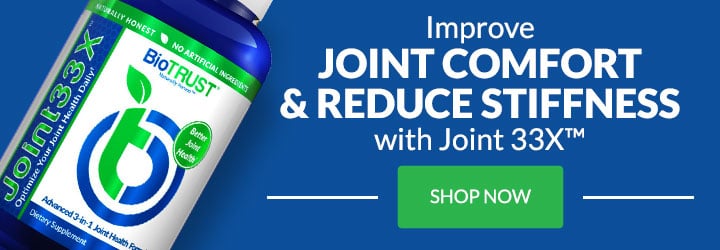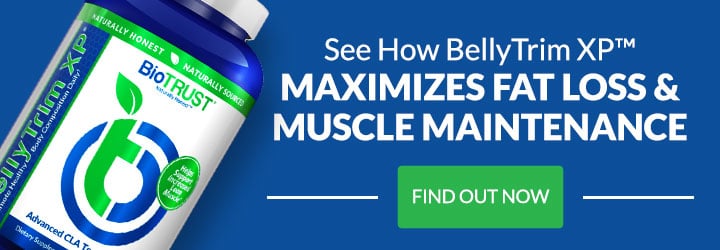9 Health Benefits of Cold Exposure (so, chill out)

Are you crazy…or just stupid?! That’s how my wife greeted me this morning as I walked in the house from the near-freezing 34˚ F-degree frigid outdoors—in only my underwear. While I’m sure my wife could make a case for both crazy and stupid, as you’re about to find out, I was just trying to take advantage of the power—and many benefits—of short-term cold exposure.
What can cold exposure do for you? How can you tap into the power of cold? How does cold exposure flex its figurative muscle? These are all questions we’ll answer below!
It Comes Down to Hormetic Stress
As we’ve talked about on the blog and podcast various times, although it’s collectively viewed negatively, stress is not inherently bad. In fact, stress not only has the potential to be good, it is absolutely necessary to get better in any domain in life.
Stress is the impetus for adaptation and resilience. Just like beauty, one could argue the adaptive nature of stress is in the eye of the beholder.
Maybe you’ve heard the saying, “The dose makes the poison.” Or, “What doesn’t kill you makes you stronger.” While the latter is a bit hyperbolic (not to mention a top hit from Kelly Clarkson), both of these phrases open our eyes to something called hormetic stress.
Take the former phrase about poison, for example. Essentially, in small doses, something potentially toxic can be healthy by triggering adaptive responses that ultimately protect the body from severe stress. On the other hand, at high doses, the same health-promoting compound can be increasingly toxic. 1
There are all kinds of examples of hormetic stressors, such as:
- Exercise
- Water
- Oxygen
- Intermittent food restriction (i.e., intermittent fasting)
- Certain phytochemicals (e.g., curcumin, resveratrol, sulforaphane, epicatechins)
Basically, the concept validates that stress isn’t inherently bad. Rather, mild, transient stress can be highly beneficial, lead to adaptation, and promote resilience. 2, 3
Another really good example of hormetic stress is cold exposure. While long-term exposure to extreme cold can have obvious repercussions (such as hypothermia), stepping outside your thermoneutral zone—that 72-or-so degree comfort zone of yours—can have a tremendous upside.
(And, yes, if you’re wondering, turning the thermostat in the other direction—turning the heat up—can also be highly beneficial. As I’ve previously written, there are many health benefits associated with sauna bathing.)
9 Benefits of Cold Exposure
Yes, I know the idea of exposing your body to colder air or water may not be all that compelling, but that’s kind of the idea behind hormetic stress. Stepping outside your comfort zone. And after you discover the long list of benefits, I think you’ll be willing to at least dip your toe in the cold water—figuratively and literally.
1. Increased metabolic rate.
Arguably one of the “sexiest” benefits of cold exposure is an increase in energy expenditure, which it accomplishes by activating brown adipose tissue (BAT). BAT is metabolically active thermogenic tissue designed to generate heat and help regulate body temperature. In essence, activation of BAT is an “energy-wasting” process that results in increased metabolic rate. 4
In one study, researchers found overweight/obese men (dressed in t-shirts and shorts), whose cold exposure involved sitting in a cold room (roughly 58˚F) for up to 6 hours a day, experienced a substantial 14% increase in metabolic rate after just 10 days. 5
If that protocol sounds a little intense, you may enjoy learning that another study showed that cold exposure to a milder 62˚F for just 2 hours a day resulted in an additional 180 calories burned. Over 6 weeks, researchers discovered the 2-hour daily cold exposure resulted in a 5.2% decrease in body fat. 6
While there’s a substantial range of variability in the degree of increased energy expenditure (called cold-induced thermogenesis), metabolic rate may increase up to 5-fold above resting levels with cold exposure. 7
2. Increased fat burning and fat use.
If boosting metabolic rate isn’t sexy enough for you, how about increased fat burning? If I’m speaking your lingo now, then let’s add another feather to the cap of cold exposure. Yep, you’ll be delighted to know, cold exposure ramps up fat burning.
To keep the body warm, the body increases rates of both fat breakdown and use, which is necessary to fuel the increased metabolic rate. 8
In one recent study, researchers put study participants in a cool room (67˚ F) and had them wear a cooling vest (62˚ F) for roughly 90 minutes. After just 30 minutes, metabolic rate had increased by 16.7% while fat burning increased by a substantial 72.6%. This indicates the increase in cold-induced energy expenditure was met primarily by using more fat for fuel. 9
With all that in mind, it may not surprise you to learn that some researchers have referred to BAT as an “anti-obesity tissue” and cold exposure as a “weapon” to combat obesity. And for what it’s worth, researchers speculate a reduction in variability in ambient temperature (and more time spent in the “thermoneutral zone,” which refers to that 72˚ F-ish comfort zone) is one of the lesser-known contributors to obesity. 10
3. Improved insulin sensitivity and glycemic control.
Researchers also view cold exposure as a tool to combat type 2 diabetes, thanks to its potential impact on insulin sensitivity and metabolic health. 8 In other words, cold exposure may not have only an anti-obesity effect, it may also have an anti-diabetic effect.
For example, research has shown that activation of BAT can increase the uptake of blood glucose, which can either be burned (as fuel) or stored as glycogen (for later use). This results in a decrease in blood glucose and increase in insulin sensitivity. 11
In one study, after prolonged cold exposure (5 – 8 hours in a 66˚ F room while wearing a cooling vest), researchers found that participants significantly increased metabolic rate, whole-body glucose disposal, carbohydrate oxidation, and insulin sensitivity, supporting the notion that BAT functions as an anti-diabetic tissue. 12
In another study, researchers found that staying overnight in a cool room (66˚ F) for 1 month increased BAT activity and improved post-meal insulin sensitivity. 13 Additionally, research has also shown that insulin sensitivity increases by 43%, on average, in type 2 diabetics who go through a 10-day cold exposure protocol (sitting in a 58˚F room for 2 – 6 hours per day). 14
4. Reduced inflammation and pain.
This is probably one of the more well-known benefits of cold exposure, yet it bears mentioning because there are many assumptions, some of which are not supported by research.
For instance, cold-water immersion is a common post-exercise/activity recovery treatment because it is believed to reduce muscle fatigue and soreness. However, the results of cold therapy on muscle soreness are mixed. While some studies have shown it can reduce exercise-related soreness, there’s some evidence that suggests it may make the pain worse. 15, 16
Even more, one recent study showed that post-exercise cold water immersion blunted the anabolic (i.e., muscle-building) response to resistance training. And after 12 weeks, it led to smaller gains in muscle strength and hypertrophy when combined with a strength training program (compared to active recovery). 17 In other words, one hormetic stress (cold) seemed to nullify another (exercise).
Having said that, cold exposure is often used to alleviate inflammation and musculoskeletal pain in conditions like arthritis and fibromyalgia. 18 In one study, participants with inflammatory arthritis who took a two-minute cold shower each day for a week experienced significant reductions in pain. 19
In general, cold exposure leads to vasoconstriction and reduces blood flow, which in turn reduces inflammation in tissues within and around injured sites. Animal studies demonstrate the effectiveness of cold exposure for reducing inflammation in muscles following injury. Generally speaking, cold exposure seems to be effective for reducing pain. 20
5. Improved mood.
Believe it or not, cold exposure may also boost mood and feelings of well-being. In one study, researchers found that 15 whole-body cryotherapy sessions (over 3 weeks) led to significant reductions in depression and anxiety scores in patients (ages 18 – 65) with depressive and anxiety disorders. 21
Researchers believe these beneficial effects may be tied to cold exposure initiating an endocrine response and increasing levels of hormones like epinephrine, norepinephrine, adrenocorticotropic hormone (ACTH), cortisone, pro-opiomelanocortin (POMC), β-endorphins, and perhaps even testosterone. While depression is multi-factorial, one neurobiological hypothesis is dysregulation of many of these hormones just mentioned. On top of that, cold exposure may activate the body’s own opioid (i.e., “pain control”) system, which may also be beneficial in the treatment of mental disorders.
6. Improved quality of sleep.
You’ve probably heard that it’s a good idea to turn down the thermostat at night to ensure a good night’s sleep. The rationale is that a cooler bedroom (between 60 and 67°F) helps reduce core temperature, which facilitates sleep. Not surprisingly, body temperature is a strong driver of circadian rhythms. In fact, similar to light, temperature is one of the environmental cues that’s able to reset the body’s circadian clocks. 22
“Small changes in body temperature can send a powerful signal to the clocks in our bodies,” says Dr. Joseph Takahashi, an investigator with the Howard Hughes Medical Institute. “It takes only a small change in internal body temperature to synchronize cellular ‘clocks’ throughout the body.”
While lowering the thermostat is one way to facilitate a lower core body temperature, taking a cold or contrast shower at night may also support improved quality of sleep.
7. Increased alertness and focus.
This may seem like an odd benefit riding on the coattails of better sleep quality. However, there’s no debating that a cold shower can wake you and your body up, promoting a higher state of alertness. The cold also stimulates deeper breathing, helping increase oxygenation of the body’s tissues.
In the aftermath of the literal wake-up call—activation of the body’s “fight or flight” response—cold exposure actually results in an increase in the “rest and digest” response, which ultimately promotes relaxation. 23
8. Enhanced resilience and stress tolerance.
Along these lines, repeated cold exposure “hardens” the body and prepares it for similar “threats.” In a nutshell, this is what hormetic stress is all about—exposure to small, transient stress leads to adaptation.
For example, while acute cold exposure increases the “fight or flight” response, that stress response is blunted after repeated exposure (i.e., cold acclimation). On the other hand, “rest and digest” activity, which initially increases only to a minor degree, is enhanced after cold acclimation. In other words, cold acclimation lowers sympathetic activation and results in a shift toward increased parasympathetic activity. 23
The neat thing about cold exposure is that this improved stress tolerance can carry over to other areas life. It can enhance your resilience and help you remain cool-headed in other stressful situations. There’s no denying that cold exposure takes a strong mind to endure. By regularly incorporating cold exposure into your routine, you’re likely to reap the benefits of increased willpower.
9. Improved brain power and cognitive function.
Considering the benefits on hormones (including stress hormones and feel-good chemicals) and the enhancement in resiliency, it may not surprise you that cold exposure can also be good for the brain and lead to better brain function.
One recent study showed that people with mild cognitive impairment showed improvements in tests for memory after whole-body cryotherapy (exposing the body to vapors that reach ultra-low temperatures ranging from -200 to -300˚F). 24
Of course, cold exposure can be quite distracting (in the moment and perhaps even immediately after), so it’s not a huge surprise that some research finds a negative effect of cold on cognitive performance. However, repeated cold exposure is likely to be neuroprotective and beneficial because it can help regulate the release of inflammatory cytokines and nitric oxide.
How Can You Get Started with Cold Exposure?
As you may have gleaned from the sections covering the benefits of short-term cold exposure, there are multiple ways to implement this potentially useful tool. They basically come down to two different environments: cold air and cold water.
- Cold and contrast showers
- Cold-water immersion (e.g., cold pools, ice baths, etc.)
- Whole-body cryotherapy
- Turn down the thermostat
- Go outside in cold temperatures
While each of these methods is likely to serve as probable hormetic stress, and potentially lead to various health benefits, my personal preference is to use the shower and take advantage of Mother Nature whenever possible.
Keep in mind that if you opt for the cold air version of cold exposure, it doesn’t work if you compensate by putting on extra clothing. Although you don’t have to strip down to your skivvies like I often do, you’ll want to limit clothing to a t-shirt and shorts.
That said, if you go to the extreme (which you don’t need to) and go out in below-freezing temperatures, you’ll absolutely want to keep your extremities (e.g., hands, feet, head, ears, nose, etc.) covered, as they’re most susceptible to negative effects (e.g., frostbite).
Shivering is actually a good sign that your body is working to keep itself warm. And after a period of shivering, you’ll likely notice that it subsides. That’s actually an even better sign that non-shivering thermogenesis (i.e., activation of BAT) has kicked in.
Truth be told, mild cold stress begins at about 60˚F in the air, and you don’t need to go to extremes with water either. Cold stress probably begins around 80˚F in water. Many benefits can be achieved with water temperatures in the neighborhood of 60˚F.
For me, the simplest and most reliable way to integrate cold exposure is cold showers, which you can implement no matter where life takes you. After washing yourself in warm/hot water, turn the water to cold, get your mind right, and enter the cold shower. Try to stay as relaxed as possible and focus on controlling your breathing. Start with as little as 15 seconds and work your way up to a minute or so.
Contrast showers are also a great cold exposure tool. Some would argue they’re even more effective because the relative changes in temperature signal hormetic stress. Former NASA Scientist Ray Cronise developed a popular contrast shower protocol, which involves alternating 10 seconds of warm/hot water with 20 seconds of cold water. That cycle is repeated 10 times, always ending on cold.
Chill Out with Some Cold Exposure
Now that you know the benefits of cold exposure, it’s time to get comfortable being uncomfortable. Start slowly and build your way up. Stepping outside your comfort zone in any way and any amount is a step in the right direction to building a better body.








